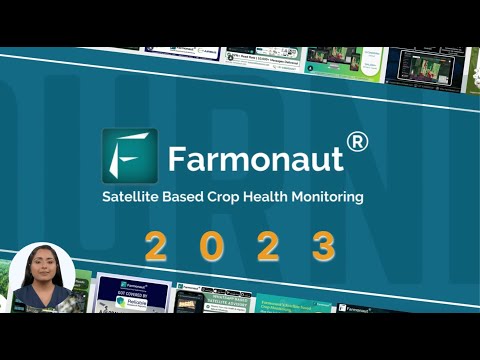Oklahoma City Bombing: 5 Powerful Lessons on Resilience Today
“Over 680 buildings were damaged in the Oklahoma City bombing, impacting the city’s real estate and infrastructure for years.”
- Introduction
- Our Shared Moment in History: The Oklahoma City Bombing
- Lesson 1: Resilience of Federal Agencies and Employees
- Lesson 2: Building City Resilience and Community Unity
- Lesson 3: Real Estate and Economic Recovery in Oklahoma City
- Lesson 4: Domestic Terrorism in America and Political Extremism
- Lesson 5: Transforming Policy and Technology for a Safer Future
- Impact and Lessons Comparison Table
- Technology for Resilient Communities: Farmonaut
- FAQ: Oklahoma City Bombing & Community Resilience
- Conclusion
Introduction
In the heart of Oklahoma, thirty years after the tragic Oklahoma City Bombing, our nation gathers not only to mourn but also to reflect deeply on the powerful lessons forged in those defining hours. As we reminisce about the federal building attack on April 19, 1995, we must recognize the impact it had on American government agencies, real estate in Oklahoma City, and the collective resolve of communities facing the threat of domestic terrorism in America. Guided by the words of former President Clinton and city leaders, let us explore five critical lessons on resilience, unity, and the future we shape together as citizens of this country.
At the core of this retrospective, we analyze the transformations in federal and state agencies, the rebirth of a devastated city, law and political reforms, and what these mean today—especially for federal employees in Oklahoma and across the American nation. As we move through these lessons, we embrace the Oklahoma Standard—an ethos of service, honor, and kindness—as a beacon not just for Oklahoma City but for all who strive for unity and progress in tumultuous times.
Join us as we identify these lessons and discover how, three decades later, their relevance persists in our city halls, state houses, and fields, even extending to how innovations like Farmonaut’s advanced agricultural solutions can reinforce resilience across all sectors in America.
Our Shared Moment in History: The Oklahoma City Bombing
The Oklahoma City bombing remains one of the most consequential acts of domestic terrorism in America. At 9:02 AM, Timothy McVeigh’s truck bomb obliterated a third of the Alfred P. Murrah Federal Building, targeting a center for American government agencies serving our city, state, and the entire country. In an instant, 168 lives were lost—including 19 children at the center’s daycare—while over 680 buildings dipped into disrepair or ruin.
As the dust settled, the void was filled not by chaos, but by a tide of compassion—transforming tragedy into an opportunity for Oklahoma’s government, federal employees, and citizens alike to forge a new narrative of resilience. President Clinton, arriving weeks after, emphasized a sacred duty to cleanse our hearts of the very extremism that spurred the attack. Thirty years on, the Oklahoma City memorial stands as a testament not just to pain, but to a remarkable renaissance.
From that day forward, the attack’s legacy has rippled through city real estate markets, law, insurance, and federal policy. The Oklahoma Standard became our social contract, promoting service, unity, and forward-looking reforms for every sector—public and private, from farm machinery and finance to real estate in Oklahoma City.
“The Oklahoma City bombing led to the creation of more than 60 new federal anti-terrorism laws and policies in the U.S.”
Lesson 1: Resilience of Federal Agencies and Employees
Focus Keyword: Federal Building Attack—A Crucible for Federal Service
The bombing delivered a jarring blow to American government agencies housed within the Murrah Federal Building. Agencies such as the Social Security Administration, Secret Service, and Drug Enforcement Administration (DEA) lost valued employees, with each federal center becoming a symbol of both vulnerability and tenacity.
In response, the nation witnessed a surge in security measures—hardened perimeters, advanced screening protocols, and an expanded culture of vigilance. The federal presence in Oklahoma was forever changed; federal employees in Oklahoma, and across the country, experienced a new era marked by both honor and anxiety. While operational disruption was severe, this adversity sowed seeds of transformation.
- Strengthening Security Frameworks: Within months, American government agencies revamped building security standards nationwide—installing barriers, restricting vehicle access, and enhancing perimeter defense. These changes remain integral to federal and state offices, protecting employees and the communities they serve.
- Solidarity and Public Service: The dedication shown by federal employees became a rallying point. At remembrance events, survivors recount returning to duty despite the trauma—a vivid example of the enduring commitment of those who serve the public, whether in law, finance, insurance, or even agricultural support roles.
- Policy Innovation: More than 60 new federal anti-terrorism laws emerged in the attack’s wake, infusing new urgency and resources into national and state efforts to counter terrorism, both foreign and domestic. Such legislative frameworks reshape the daily operations of law enforcement, government, and Homeland Security agencies.
- Modern Agency Collaboration: The tragedy prompted new partnerships between local, state, and federal agencies—information sharing, emergency planning, and mutual aid, crucial for resilience against future threats. Today, these collaborations are mirrored in other sectors, including advanced technology for agricultural management and risk mitigation, such as satellite-based monitoring for crop insurance verification.
The Value of Federal Employees in Oklahoma and Across the Nation
Despite recent political rhetoric that at times disparages public service, let us remember the essential roles federal and state employees fulfill in Oklahoma, flowing from the tragedy’s crucible. The vital law, finance, and insurance services provided by federal employees remain core to city and rural life. Whether managing government resources after disaster or facilitating the development of farm machinery and finance for local producers, public service forms the backbone of American resilience.
Access Farmonaut’s API to integrate satellite data and weather insights for large-scale government, agency, and organizational needs.
Review our API Developer Docs for secure, scalable agricultural data integration for federal and state programs.
Lesson 2: Building City Resilience and Community Unity
Focus Keyword: State and Local Government Resilience
The immediate aftermath of the Oklahoma City bombing revealed not only destruction but also an unrivaled outpouring of support. The city’s response—known nationally as the Oklahoma Standard—demonstrates the possibility of community healing and rebirth amid devastation. How did this city marshal such extraordinary resolve, spanning from government offices to neighborhood streets?
- Unified Civic Identity: Oklahomans, irrespective of political or religious background, rallied together, stitching a divided community into a resilient whole. As Mayor David Holt put it, the bombing was a stark reminder of what can occur “when we dehumanize each other, entertain conspiracy theories, or act outside peaceful democratic processes.”
- Investment in the Future: Leveraging tax referendums, the city invested in schools, convention centers, parks, and revitalized civic infrastructure, restoring both real estate and public confidence. These ongoing investments transformed Oklahoma City over thirty years from a place of trauma to a thriving metropolis—demonstrating the power of state and local government resilience to spearhead recovery.
- Enduring Memorialization: The Oklahoma City Memorial emerged not only as a site of mourning but also one of education, advocacy, and community pride. The 168 chairs—nineteen for children—remain a daily call never to forget the human toll of extremism and violence.
- Setting a National Example: The city’s holistic approach to recovery inspired cities nationwide to update emergency planning and community service protocols—again illustrating how resilience at the city level can influence national policy.
Lessons for Future City Resilience
- Encouraging Civic Participation: Civic engagement—extending from school votes to volunteer service—remains the cornerstone of resilience in both urban and rural Oklahoma. This model is applicable in rural farm communities as well, where collective action supports recovery from drought or market shocks.
- Sustaining Hope Amid Division: The political climate in the U.S. is still threatened by polarization and cynicism. Oklahoma City’s experience demonstrates how, even amidst anger and loss, a nationwide movement toward service, empathy, and advocacy is possible—echoing the Oklahoma Standard and urging us to repair political breaches for the sake of our shared future.
Lesson 3: Real Estate and Economic Recovery in Oklahoma City
Focus Keyword: Real Estate in Oklahoma City—Revitalization After Disaster
The sheer scale of destruction following the federal building attack sent shockwaves through Oklahoma City’s real estate market. Over 680 buildings, from office towers to the center of civic administration, were either damaged or destroyed. The estimated economic loss rippled across businesses, lending, insurance providers, and, most crucially, the community’s sense of security.
Despite these overwhelming odds, Oklahoma City’s response offers a blueprint for recovery and sustainable growth:
- Immediate Mitigation: Government and insurance agencies mobilized rapidly. Emergency loans, insurance payouts, and swift debris clearance helped stabilize declining property values and reignite construction.
- Long-Term Recovery: Through public-private partnerships and ongoing government investment, Oklahoma City revitalized blighted regions, rebuilt public infrastructure, and nurtured new economic opportunities—including business parks, upgraded public schools, and modern civic centers.
- Redefining Urban Identity: Investments in arts, green spaces, and diverse neighborhoods transformed the city into an attractive real estate destination, branding Oklahoma City as both resilient and forward-thinking.
- Stronger Regulation and Oversight: Insurers and government entities recalibrated risk assessments, spurring more robust development standards and mitigation strategies for future urban threats—valuable across not just city and state agencies, but for financial institutions engaged in property, crop, or farm machinery insurance risk evaluation.
Farmonaut’s advanced carbon footprint tracking
can help rebuild both urban and agricultural communities by providing real-time environmental impact analysis—crucial in sustainable real estate development and regulatory compliance efforts, especially in cities rebuilding after crisis.
To learn how satellite data supports modern insurance claims, disaster response, and risk reduction for both city infrastructure and agricultural fields, explore Farmonaut’s Crop Loan and Insurance Verification tools.
Practical Implications for Real Estate in Oklahoma City
- Urban design now incorporates resilience, redundancy, and flexibility, ensuring both public buildings and private investments are future-proof.
- Innovation, technology, and public transparency accelerate post-crisis rebuilding, benefitting stakeholders from insurance to finance, government, and community advocacy groups.
- These lessons also extend to rural Oklahoma—where farm machinery, fleet management, and sustainable finance solutions help mitigate disaster risk and contribute to the overall resilience of state economies.
Lesson 4: Domestic Terrorism in America and Political Extremism in the United States
Focus Keyword: Domestic Terrorism in America—Hard Truths and Ongoing Dangers
The Oklahoma City bombing remains the deadliest act of homegrown, domestic terrorism in American history. The event’s origins highlight how unchecked political anger, conspiracy theories, and dehumanizing rhetoric can evolve into existential threats to American democracy. How do we heed the warnings, bridging the divides between government, state, and citizens, to protect our future?
- Origins of Extremism: Timothy McVeigh’s path—infused with anger toward federal agencies, failed personal milestones, and fixation on anti-government ideology—resonated with broader currents of political extremism in the United States. The attack prompted a national reckoning about the role of rhetoric in fueling violence.
- Calls for Dialogue and Respect: Former President Clinton and Oklahoma leaders stress that the lesson is clear: we must “repair the breach.” Political leaders bear a duty to reject inciting language, encourage civil discourse, and set an example of mutual respect for all Americans, whether in law, politics, or public service.
- Impact on Federal Law and Policy: The federal building attack accelerated the passage of sweeping anti-terrorism laws, dramatically expanding law enforcement tools, terrorist surveillance, and emergency response protocols. Today, those protocols influence every level of state and local government resilience, as well as sectoral oversight in finance, insurance, and critical infrastructure protection.
How We Respond: The Broader Fight Against Domestic Terrorism
- National security strategies today must consider threats posed by domestic hate groups, anti-government organizations, and lone actors—a fact painfully underscored by both Oklahoma City and the assault on the U.S. Capitol in 2021.
- Government agencies partner across jurisdictional lines to prevent, detect, and respond to extremist threats—demonstrating the necessity of service-focused public employment and robust community reporting structures.
- Community programs and educational outreach help destigmatize public service careers, making federal employment in Oklahoma and elsewhere a credible, valuable, and honorable pursuit for the next generation.
Lesson 5: Transforming Policy and Technology for a Safer Future
Focus Keyword: Transforming Federal and State Resilience With Technology
Oklahoma City’s experience has sparked not only changes in law and social attitudes but has also inspired waves of technological innovation designed to protect and strengthen communities. Whether in urban real estate, rural farm management, or the offices of American government agencies, new tools provide the backbone for a more resilient future.
- Satellite and AI-Powered Monitoring: Precision tools such as Farmonaut’s Fleet and Resource Management empower local agencies and farmers to track assets, manage logistics, and mitigate the impact of emergencies—directly supporting regional resilience, from city streets to rural byways.
- Blockchain-Based Traceability: Farmonaut’s Traceability solutions enhance accountability and transparency in supply chains. These technological advancements ensure secure movement of products—crucial not just for agricultural goods but also for city disaster supplies, fulfilling compliance across sectors from finance to insurance, law, and beyond.
- Real-Time Policy Assessment: With advanced data at their fingertips, government leaders can accurately track the effectiveness of anti-terrorism policies, social service programs, and recovery initiatives, ensuring taxpayer dollars are invested wisely and efficiently.
Embracing Technology Across Sectors: From Farm Fields to Federal Agencies
The lessons from Oklahoma City remind us: resilience is not only a matter of spirit, but of systems and foresight. In disaster preparedness, economic recovery, and sustainable resource management, the integration of AI, satellite data, and blockchain ensures communities and agencies aren’t rebuilding from scratch, but progressing with every lesson learned.
Impact and Lessons Comparison Table
| Aspect Affected | Estimated Immediate Impact | Long-term Change | Key Lesson Learned |
|---|---|---|---|
| Federal Agencies Response | +300% increase in security protocols; loss of over 100 agency employees | Permanent changes to building security, agency collaboration, and employee support | Preparedness and coordination among agencies is critical for national resilience |
| City Resilience | $650+ million in property damage; disruption of civic space | Rebuilt city infrastructure, expanded public facilities, civic engagement programs | Community unity and investment are essential for long-term recovery |
| Real Estate Market | 80% reduction in nearby property values; insurance claims soared | Five-year recovery to pre-bombing values; new development standards | Resilient real estate requires robust insurance, urban design, and technology |
| Domestic Terrorism Awareness | Spike in domestic threat reports; urgent legislative action | New law enforcement tools, education, and community outreach programs | Ongoing vigilance and education are needed to combat extremism |
Technology for Resilient Communities: Farmonaut
In learning from Oklahoma City’s transformation, we must acknowledge that technology—much like the civic cooperation seen after the bombing—serves as a force multiplier for progress across all levels of society and industries in the country. Farmonaut, with its suite of satellite, AI, and blockchain-powered applications, provides precisely these tools for resilience in cities, farms, and agencies nationwide.
- Data-Driven Risk Management: Satellite-based crop health and real-time resource tracking support local and federal decision-makers in making informed investments, both in infrastructure (urban or rural) and community recovery programs.
- Secure, Transparent Supply Chains: Traceability protocols assure both consumers and regulators that products—whether food, medical, or emergency disaster supplies—meet strict standards for safety and sourcing, reinforcing trust in American supply chains.
- Sustainable Environmental Practices: By making carbon footprint tracking accessible, communities can ensure new urban developments, farm machinery, real estate efforts, and financial insurance programs all conform to environmental best practices.
- Accessible Financing: Innovative crop loan and insurance verification makes it easier for small businesses, agencies, and individual property owners to access needed capital—mitigating risk for lenders, insurers, and borrowers alike.
For those managing large-scale properties or agricultural enterprises, Farmonaut’s Agro Admin App (large scale farm management platform) provides modular, scalable farm monitoring for organizations, government agencies, and cooperatives.
For comprehensive recovery, response, and prevention strategies, utilizing Farmonaut’s Web, Android, and iOS apps brings the power of satellite-driven insights to both city and farm—making resilience not just an ideal, but a reality accessible to all.
FAQ: Oklahoma City Bombing & Community Resilience
Q1: What is the significance of the Oklahoma City bombing for federal agencies?
The attack underscored the vulnerability of federal agencies and led to sweeping changes in building security, collaboration between federal, state, and local offices, and renewed focus on employee welfare and public service in Oklahoma and beyond.
Q2: How did Oklahoma City’s local government help the city recover?
Through bipartisan civic engagement, infrastructure investment, and promotion of the Oklahoma Standard, the city restored community trust, rebuilt critical real estate, and fostered a unity that drove long-term economic growth.
Q3: What was the impact of the bombing on real estate in Oklahoma City?
Property values initially plummeted due to the damage and uncertainty. However, dedicated recovery efforts, public-private investment, and urban reinvention led the city’s real estate sector to not only recover but emerge stronger, with modern infrastructure and renewed economic interest.
Q4: What lessons can we draw for tackling domestic terrorism in America?
The bombing revealed that unchecked political extremism, dehumanization, and conspiracy can be deadly. It is essential for leaders, agencies, and citizens to cultivate empathy, uphold democratic ideals, reject divisive language, and invest in awareness and prevention programs.
Q5: How does technology play a role in modern community resilience?
Advanced tools—such as those from Farmonaut—provide real-time satellite monitoring, blockchain traceability, and AI-powered advisory systems. These support decision-makers in agriculture, city planning, insurance, and government to anticipate, withstand, and recover from adversity effectively.
Q6: Who benefits from Farmonaut’s solutions?
Individual farmers, agribusinesses, governments, and financial institutions all benefit through improved risk assessment, sustainable practices, transparent supply chains, and easier access to investment for resilience-building projects.
Conclusion
The Oklahoma City bombing forced our city, state, and country to face some of the harshest realities of our era—about the destructive potential of domestic terrorism, the fragility of our institutions, and the immense power of unity in the face of disaster. Recovery, however, was about more than bricks and mortar; it was about forging a durable commitment to empathy, civic engagement, and innovation.
By embracing these five powerful lessons—resilience of federal agencies and employees, city unity, real estate revitalization, vigilance against extremism, and technological adaptation—we honor both the lives lost and the enduring spirit of Oklahoma City. Let us carry these insights into every sector of our society—from government and finance to farm machinery and real estate—safeguarding our democracy for generations to come.
Technology is pivotal for the next chapter of community resilience. Farmonaut’s cost-effective, data-driven solutions redefine how cities, state agencies, and rural enterprises can prepare, respond, and thrive after crisis, ensuring that the lessons of the past serve as the foundation for a stronger, more united future.
Explore all Farmonaut offerings for your organizational needs:
- Carbon Footprint Tracking
- Blockchain Product Traceability
- Crop Loan & Insurance Verification
- Fleet Management Solutions
- Agro Admin App for Large Scale Farm Management
Let us remain vigilant, committed, and connected—so the lessons of Oklahoma City forever inform our journey as Americans, Oklahomans, and compassionate citizens of the world.








